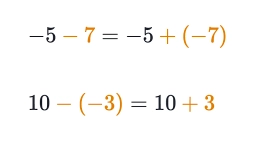Introduced 81104
The * (asterisk) operation assigning one number to two pairs of numbers is introduced as follows:
(a, b)*(c, d) = ac+bd
We know that:
(x,2)*(-1, v) = -1 and (2,-1)*(u, v)=5 and (u, v)*(1,1)=-2
What is (1,2)*(x, y) equal to if y=3?
(a, b)*(c, d) = ac+bd
We know that:
(x,2)*(-1, v) = -1 and (2,-1)*(u, v)=5 and (u, v)*(1,1)=-2
What is (1,2)*(x, y) equal to if y=3?
Final Answer:

Tips for related online calculators
Our vector sum calculator can add two vectors given by their magnitudes and by included angle.
Do you have a linear equation or system of equations and are looking for its solution? Or do you have a quadratic equation?
Do you have a linear equation or system of equations and are looking for its solution? Or do you have a quadratic equation?
You need to know the following knowledge to solve this word math problem:
geometryalgebraarithmeticbasic operations and conceptsGrade of the word problem
Related math problems and questions:
- What is 13
 What is the number sentence? * 1 point 1/2 + 3/4 + 1/4 = A 1/2 - 3/4 - 1/4 = B 1/2 x 3/4 x 1/4 = C 1/2 ÷ 3/4 ÷ 1/4 = D
What is the number sentence? * 1 point 1/2 + 3/4 + 1/4 = A 1/2 - 3/4 - 1/4 = B 1/2 x 3/4 x 1/4 = C 1/2 ÷ 3/4 ÷ 1/4 = D - triangle 5420
 Two pairs of parallel lines, AB to CD and AC to BD, are given. Point E lies on the line BD, point F is the midpoint of the segment BD, point G is the midpoint of the segment CD, and the area of the triangle ACE is 20 cm². Determine the area of triangl
Two pairs of parallel lines, AB to CD and AC to BD, are given. Point E lies on the line BD, point F is the midpoint of the segment BD, point G is the midpoint of the segment CD, and the area of the triangle ACE is 20 cm². Determine the area of triangl - Internal angles
 The ABCD is an isosceles trapezoid, which holds: |AB| = 2 |BC| = 2 |CD| = 2 |DA|: On the BC side is a K point such that |BK| = 2 |KC|, on its side CD is the point L such that |CL| = 2 |LD|, and on its side DA, the point M is such that | DM | = 2 |MA|. Det
The ABCD is an isosceles trapezoid, which holds: |AB| = 2 |BC| = 2 |CD| = 2 |DA|: On the BC side is a K point such that |BK| = 2 |KC|, on its side CD is the point L such that |CL| = 2 |LD|, and on its side DA, the point M is such that | DM | = 2 |MA|. Det - Parentheses
 Insert parentheses into the expression 2/3 times 5/6 + 3/4 divided by 3/5 so that a. The first operation to be performed is addition and b. The first operation to be performed is division. In both cases, evaluate and write results.
Insert parentheses into the expression 2/3 times 5/6 + 3/4 divided by 3/5 so that a. The first operation to be performed is addition and b. The first operation to be performed is division. In both cases, evaluate and write results. - X-coordinate 81737
 In triangle ABC, determine the coordinates of point B if you know that points A and B lie on the line 3x-y-5=0, points A and C lie on line 2x+3y+4=0, point C lies on the x-coordinate axis, and the angle at vertex C is right.
In triangle ABC, determine the coordinates of point B if you know that points A and B lie on the line 3x-y-5=0, points A and C lie on line 2x+3y+4=0, point C lies on the x-coordinate axis, and the angle at vertex C is right. - The diagonals 2
 The diagonals AC and BD of a rectangle ABCD intersect at a point O. If OA=4cm, find AC and BD.
The diagonals AC and BD of a rectangle ABCD intersect at a point O. If OA=4cm, find AC and BD. - Determine 2611
 1. Determine a number with the same result if we multiply it by ten as if we add 10 to it. 2. Věra is twice as old today as her sister Jitka. In five years, Jitka will be only 1/3 years younger than Věra. How old are Věra and Jitka today? 3. Find the pair
1. Determine a number with the same result if we multiply it by ten as if we add 10 to it. 2. Věra is twice as old today as her sister Jitka. In five years, Jitka will be only 1/3 years younger than Věra. How old are Věra and Jitka today? 3. Find the pair
